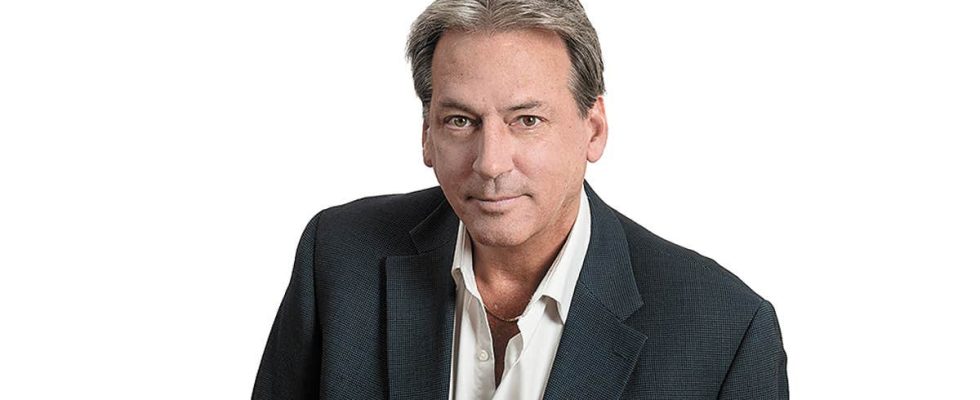How is it that we are talking about a significant wealth gap with Ontario and that it should be closed, when Quebec is well below the cost of living in Ontario? Whether we’re talking about car insurance, home insurance, daycare, the cost of electricity, the cost of housing, the cost of real estate, etc. Do we really need to have the same salaries?, asks Alain Carpentier, a reader of the Courrier de l’ économique du Duty.
When we talk about the wealth gap, which stood at 14% favoring Ontario in 2022, we are not referring to wages, but more to the standard of living, and the main measure used is real GDP per capita. It is also said to be a measure of economic prosperity and also facilitates comparison with other economies. With its limits and imperfection, this indicator is based on the notion of purchasing power and not, more broadly, quality of life.
That said, and Mr. Carpentier’s question could not be more relevant, in this comparison game, internationally we will adjust the data according to a purchasing power parity index. However, such an index applied to the provinces, which would take into account the differential in purchasing power of the Canadian dollar in the different provinces (here between Quebec and Ontario) does not officially exist. At most we have an index of the difference in the cost of living between cities. But by doing calculations to introduce what the economist and professor emeritus of UQAM Pierre Fortin would call interprovincial parity of purchasing power, the standard of living in Quebec would be rather higher (possibly by some 2.5%) than that of Ontario in 2022, according to an identical purchasing power unit. In this thought exercise by Pierre Fortin, the gap would be more than filled.
Inflation, wages and tax burdens
The inflation differential effectively remains to Quebec’s advantage, with a gap in the consumer price index (CPI) of 4% in 2022. It was more expensive in Ontario, particularly in terms of housing, purchase of property, current and household expenses, and public transport.
However, it has narrowed this year, with a stronger evolution of the CPI here. Three elements mentioned among others: First the introduction of the daycare program by the federal government, statistics indicating that the cost of daycare services has decreased by 2% in Canada except in Quebec, which already has its own program. Then a stronger correction in the real estate market. Finally, an increase in food prices is more felt in Quebec.
In the 2023 ranking of the world’s major cities according to the cost of living by Mercer, Toronto, at 90e world rank, is the most expensive city in Canada, for a second year in a row, ahead of Vancouver at 116e rank. The rank of Montreal (135e) and Ottawa (137e) remained relatively unchanged while Calgary (137e) is the least expensive of the five Canadian cities named in this ranking.
Toronto therefore weighs heavily. National Bank economists noted that behind the wealth gap of 14% we find a gap of 25% between Greater Montreal and Greater Toronto. Outside of these urban centers, it would be 6%.
At the salary level, the Institute of Statistics of Quebec measured before the pandemic a lower gap of almost 9% for full-time employment in the private sector, of 12% in the public sector, which it explains in particular by less of hours worked by Quebecers and by the size of companies, the presence of large companies being more marked in the Ontario economy.
In the exercise, we cannot ignore the more redistributive Quebec model, with a broader portfolio of social programs, which can explain the positioning of Quebec at the forefront of the provinces in terms of tax burdens as a percentage of GDP in 2022. fiscal pressure of provincial and local administrations, which measures all taxes and social contributions, amounted to 22.3% in Quebec, compared to 17.2% in Ontario and 16.7% for the Canadian average, underlines Statistics Canada.
This weight was, however, down compared to that of 23.1% in 2021, under the effect of an increase in nominal GDP higher than that of taxes and social contributions. This reduction in the weight of the load between these two years, of 3.5% in Quebec, is however lower than that of 5.5% measured for Ontario, a difference which is not without being influenced by an increase in 2.5% of Quebec GDP at market prices in the meantime, compared to 3.9% for Ontario GDP.
And GDP per capita…
But if, finally, we return to the only data of GDP per capita… it has already been written that an approach borrowing from opportunity cost brings a certain relevance, even a certain value to the increase of this component in the equation. The Research Chair in Taxation and Public Finance estimated that in 2022, if there had been no wealth gap with Ontario, Quebec would have collected around $16 billion in additional independent revenue, what to get out of the equalization system. “This sum could have been used to make up for the loss of equalization [13,7 milliards de dollars en 2022-2023], to better finance public services, to reduce taxes or even a mixture of the three. In addition, based on the proportions of the components of GDP in 2022, the catch-up in real GDP per capita would also have resulted in a recurring increase in wages estimated at $9,000 per employee,” the analysis reads.
